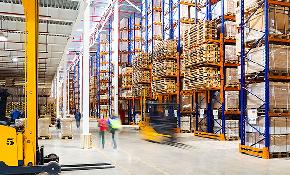WASHINGTON, DC—An active development pipeline notwithstanding,net absorption of industrial space is expected to remain strong throughout 2014 and 2015, according to a NAIOP Research Foundation report obtained exclusively by GlobeSt.com. The 12-month tallies for this year and next are projected at 211 million and 205 million square feet, respectively, or about double what was seen in 2011 and 2012 as the sector began recovering.
That being said, absorption is expected to taper to about 174 million square feet in 2016—still an impressive number by any measure. “The reason for the slightly tempered forecast is twofold,” says Joshua Harris, director of the Dr. P. Phillips Institute for Research and Education in Real Estate at the University of Central Florida and co-author of the report with Hany Guirguis. “First, we believe that some of the growth in demand experienced in 2013 and ‘14 was a result of pent-up demand that followed the periods of low growth after the last recession; we believe that this effect likely will exhaust itself by the end of ‘14. Secondly, the levels of GDP growth forecast by the Federal Reserve and other economists have been revised downward; these inputs feed into the model and thus largely determine the forecast levels.”
In the near term, however, industrial’s hot streak isn’t likely to be derailed, Thomas J. Bisacquino, president and CEO of NAIOP, the Commercial Real Estate Development Association, tells GlobeSt.com. “There is such demand” for industrial, which is being driven by a couple of “unique drivers,” he says.
First and foremost is the tremendous growth in the energy sector. ”You look at Houston—that market is on fire,” says Bisacquino. “And in western Pennsylvania, a lot of the warehousing is in direct response to all of the natural gas that they’re discovering.” Despite near-term regulatory hurdles, Bisacquino anticipates more, not less, exploration occurring for natural gas.
Further, energy production is helping spur a resurgence of domestic manufacturing. “It’s starting slowly, but we’re seeing the return of some manufacturing to the US because of this abundance of natural energy and the cost being relatively modest,” Bisacquino says.
The other “huge” factor, he says, is ecommerce. This growth is impacting retail significantly, of course: “Each month that goes by, more and more goods are coming through ecommerce channels, especially the mid-price, commodity-type items.” Yet in the industrial space, online selling is leading to a mushrooming of distribution centers and fulfillment centers.
With those factors at work, says Bisacquino, “I don’t see any point in the next three to five years where we’re going to have negative absorption” even in the face of continued development. And the pipeline is likely to stay full even in the face of the pent-up demand that led to a dramatic resurgence in construction as the sector’s recovery gained traction.
“So now in ‘14, we’re seeing the result of that,” he says. “And there may be a dropoff in the amount of new space being developed, but it will be minuscule. It won’t be a huge dropoff “ As for the industrial sector itself, “It will stay hot” in the near term.

















 Copyright © 2024 ALM Global, LLC. All Rights Reserved.
Copyright © 2024 ALM Global, LLC. All Rights Reserved.